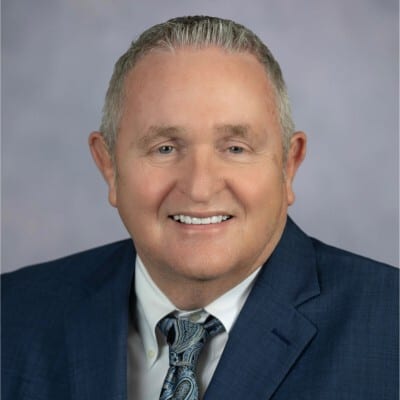december 2023


Enterprise Services
Taelor Daugherty, Assistant Editor
Security should be seamlessly blended into healthcare procedures to ensure all essential operations remain functional.
Building a Security Baseline for Healthcare Facilities

Halfpoint via Getty Images
Healthcare is often a place of high stress. Patients face medical emergencies, loss of loved ones and financial worries, all of which can lead to unsafe situations for themselves and staff. In addition, healthcare staff face the risk of workplace violence, civil unrest and active shooter situations.
“We have a compromised patient population that require specific security needs. We often handle difficult and emotional situations that tend to result in escalation of behaviors. Our campuses typically have thousands of team members, patients and visitors a day, requiring good visitor management and safety protocols to maintain a safe healing environment,” says Tony Venezia, Senior Director of Public Safety at Tampa General Hospital.
As healthcare professionals work to heal and treat their patients, hospital security leaders have to work to ensure all staff are prepared for a security incident.
Venezia recommends building a thorough workplace violence plan and committee, and requiring employees to complete in-person training. Training should include de-escalation, self-defense, crisis prevention intervention (CPI) and active shooter training. “Share information with team members about civil unrest in their cities and surrounding areas. Have a solid IT systems, policies and procedures around cybersecurity. Conduct regularly tests to measure vulnerabilities and maintain team awareness and vigilance. Provide frequent ongoing training and information for awareness to team members,” Venezia says.
To remain effective, this training has to reach all employees. Doctors, nurses, sanitation and maintenance staff and anyone regularly working in a facility should be able to recognize the signs of a potential security incident and proceed accordingly. They need to know how to report an incident and who to report it to, and ideally recognize the signs of an emergency early on to mitigate damage.
This kind of preparation requires communication across departments. If a patient or visitor becomes violent, healthcare professionals need to be able to communicate quickly for assistance. In the event of severe weather, all departments need a way to communicate everything that needs to be done in preparation.
[Patient and staff safety] is a unique balance that requires good safety plans to protect the team so they can provide world-class care to patients.”
— Tony Venezia, Senior Director of Public Safety at Tampa General Hospital

“Interdepartmental collaboration is a vital piece of having a successful security department in healthcare,” says Holly Rasche, Director of Security Management Services at Northwest Community Healthcare, a Chicago-area healthcare network. Rasche says that her security department works closely with many stakeholders across the organization, including food services, environmental services, nursing and others to ensure security across the healthcare system. She says that security’s involvement across the organization helps all employees trust the security department and report suspicious incidents as they occur.
“We want to make sure that the staff are comfortable coming to our security officers saying, ‘Hey, I saw this.’ It doesn’t look right, can you investigate?’ If the nursing staff see an officer do something that maybe they feel wasn’t right, they’re comfortable in reporting that, and vice versa. If an officer sees something that nursing or somebody else in the organization is doing and it doesn’t feel right, it’s important that they’re comfortable reporting that.”
Because of the nature of healthcare organizations, it is important to build security protocols that don’t compromise patient care. This could look like minimum staffing limits to ensure no one is working alone, or having a way for staff to communicate directly with security personnel. In the event of an emergency, this could mean having clear evacuation and lockdown procedures.
“[Patient and staff safety] is a unique balance that requires good safety plans to protect the team so they can provide world-class care to patients. It’s important to have a large and visible security presence across the campus. This includes good physical security measures, in addition to lots of training, policies and procedures and resources for the team, as well as patients/visitors,” Venezia says.
Security doesn’t end at patients and staff. Facilities such as hospitals take on a high volume of visitors, making it essential to develop proper policies. Badges to identify staff, visitors or patients from one another can make it easier to recognize whether someone is allowed in a particular space. In the event of a larger emergency, such as severe weather, the increase volume of visitors makes identification critical.
“It’s important to have a good visitor management system, as well as culture of safety and team member awareness around who is in the hospital and their reason for being there. We have security personnel at all of our entrances and recently added weapons screening to the main hospital and freestanding emergency departments (FSEDs),” Venezia says.
It's important to ensure the team feels connected to each other, especially at large hospitals where security personnel may work in different parts of the facility or on opposite shifts.
“I think the best way to support the team is to be on the floor to be part of the team. Don’t be absent. I always make sure that every day I touch base with my team. And I stay integrated with them so that I know what they’re dealing with and they have an understanding of what I deal with,” Rasche says.
In an environment where emergencies aren’t only possible, but expected, security leaders have to prepare themselves and their organizations for every outcome. Thorough planning can help protect patients, visitors and staff in the event of an incident.



